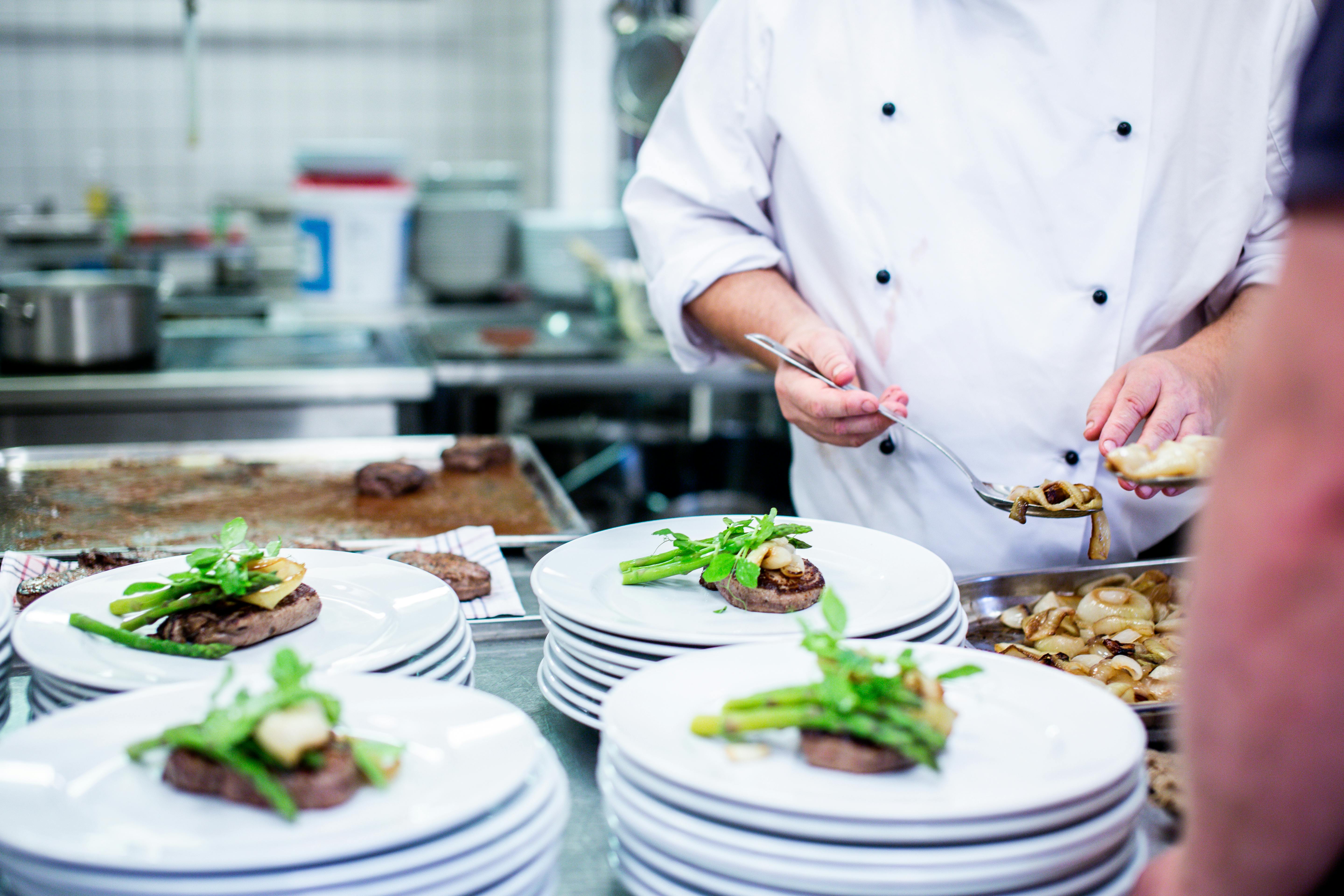Dining Redefined: Exploring the Future of Restaurants
From new technologies to personalized restaurant experiences and sustainability – discover the fascinating future of the restaurant industry.
Why sustainability is often a challenge in the hospitality industry and 5 easy changes to help make your own business more sustainable.

From individual consumers to large global corporations – sustainability affects us all. Today, more and more people care about the environment and look for companies that operate responsibly. Sustainability also plays an important role in the hospitality industry to ensure long-term success and meet the high expectations of guests when they visit a restaurant.
In this article, we would like to discuss why sustainability is often a challenge and what tips there are for implementing more sustainability in your own restaurant:
Implementing sustainability is not an easy task for restaurateurs, as the production, transportation, and preparation of food have an increasing impact on the environment.
Meat production is an often underestimated climate factor. In fact, meat consumption is one of the main sources of greenhouse gases that pollute the environment. Nearly half of all food-related emissions come from meat production. In addition, 70 % of the world's agricultural land is already used for livestock production, and the trend is rising.
The transportation of food is also significant. Thanks to the global economy, almost all products are available year-round. The long transport routes used by suppliers consume a lot of fuel and cause harmful greenhouse gas emissions.
Food preparation in many kitchens is also not environmentally friendly. Restaurants frequently order excessive quantities that cannot be recycled. This often results in large amounts of waste, including food waste, plastic waste, and other forms of waste.
But there are simple ways that restaurants can become more sustainable and overcome these challenges. The good news is that sustainability can often be achieved in small steps.
As energy consumption increases, more carbon dioxide is released into the atmosphere, contributing to the greenhouse effect. To reduce CO2 emissions, it is necessary to use energy efficiently. However, there are many things you can do today to reduce your restaurant's energy costs.
For example, use energy-efficient kitchen appliances (such as induction stoves and dishwashers) in your business. Replace old models with modern, energy-efficient ones. Don't be startled by the initial cost, as your annual operating costs will improve.
Optimize your restaurant lighting with LEDs. Use motion detectors for rooms that are not used very often (e.g., corridors).
Regulate your heating, as the room temperature in your restaurant should not exceed 22°C for your guests. After work, you can turn down the heat. This is not only good for sustainability, but also for your costs.
Make sure your facility's ventilation is not running longer than necessary. Timers make it easy to schedule intervals. Also, clean filters regularly and use multi-stage ventilation systems in your kitchen to adjust ventilation to your individual needs.
Involve your staff and make them aware of the energy guzzlers in your restaurant. With simple reminders, your team can ensure that certain appliances are not left on unnecessarily, that all lights are turned off when they leave the room, or that the refrigerator is closed properly.

It's not just about saving energy, it's also about saving water. After all, water is a finite and precious resource that no living creature can do without, making it more important to conserve it. And it is easy to do so by making a few simple changes in your restaurant.
Again, you can save a lot by using the right appliances. Use a modern dishwasher instead of washing dishes by hand, which wastes a lot of water. Be sure to replace older models, as they often use twice as much water as a newer machine with innovative washing technology. Always make sure to fill the dishwasher to the brim. Water consumption is the same regardless of the load. Even this small change in practice can easily save a lot of water.
You can also save a lot of water by flushing the toilet. Use modern two-button flush systems in your toilets. Did you know that the smaller button saves more than half the water of the larger button?
Every drop counts – so fix leaks or dripping toilets quickly, as they are often a big waste of water.
Monitor water use in the kitchen. Teach your staff that ingredients can be rinsed in a water bath rather than under a single stream of water. Or that frozen products should not be thawed under running water. Again, tips for your staff can pay off.
About 1.3 billion tons of food currently ends up in the trash. That is one-third of the food produced in the world. These numbers underscore why sustainable food plays an important role in our society.
There are now many sustainable concepts that declare war on food waste and focus on the sustainability aspect of food. These include Zero Waste, Leaf to Root, and Nose to Tail.
While Zero Waste focuses on reducing all waste, Leaf to Root focuses on fully utilizing fruits and vegetables. Nose to Tail focuses on the complete recovery of slaughtered animals.
Restaurateurs no longer have to throw away leftover food, thanks to apps like Too Good to Go and ResQ. They make it very easy to offer food to your guests at a reasonable price.
In addition to food waste, packaging waste is an ongoing issue in sustainable dining. Avoid single-use packaging and use reusable or biodegradable packaging to help make your restaurant more sustainable.
Talk to your supplier about what purchases can be made without packaging. Another option is to buy larger quantities of certain foods (e.g. sugar). This not only saves packaging, but also money, as larger quantities are usually cheaper.
Digitization also plays a role in reducing waste: using a digital menu in the restaurant industry is an effective way to reduce waste. Both the production of paper and the disposal of paper waste have a negative impact on the environment. The digital menu helps to save materials and minimize the environmental footprint.

Whether at the table, in the restroom or in the kitchen, each area of a restaurant generates different types of waste. Proper waste separation in restaurants is critical to promoting sustainability, meeting regulatory requirements, and using resources efficiently. This process requires a conscious and well-coordinated interaction between management and staff.
The first step is to provide clear guidance and training on waste separation. Employees should know what types of waste there are and how to separate them correctly. This includes distinguishing between paper, glass, plastic and food waste.
As a next step, you can introduce collection bins for the different types of waste in your restaurant. These bins should be clearly labeled to avoid confusion and make it easier for your staff to separate waste.
Regular checks are necessary to ensure that waste separation is being implemented correctly in your restaurant. If problems arise, they should be resolved quickly, and training should be provided to make employees aware of waste separation.
Overall, proper waste separation is a joint effort that not only protects the environment, but also saves money and improves your company's image.
Sustainable hospitality industry starts with purchasing: only by making conscious choices can you reduce your environmental footprint and improve the quality of your food.
Focusing on seasonal foods allows you to use fresh ingredients that are in season. Using seasonal produce also minimizes the need for energy-intensive greenhouses and long-distance transportation. In addition, local seasonal produce is usually less expensive because it is available in sufficient quantities.
You should also give preference to locally sourced ingredients. Avoiding long transportation routes reduces CO2 emissions and contributes to a significant reduction in environmental impact. Working with regional producers can also create closer ties between restaurateurs and suppliers, which can significantly improve the quality and freshness of food.
Buying seasonal and local contributes to a responsible business strategy that not only promotes sustainability, but also enhances the dining experience for your guests.
The sustainable restaurant journey begins with small steps that can have a big impact on our environment. Restaurateurs can reap not only environmental benefits, but economic benefits as well.
In summary, sustainability in the restaurant industry means not only being environmentally conscious, but also making smart economic decisions. By making small changes, you can significantly reduce your environmental impact, cut costs in your own business, and improve the quality of your food. This creates a win-win situation for your restaurant as well as for the environment.
From new technologies to personalized restaurant experiences and sustainability – discover the fascinating future of the restaurant industry.
Discover three sustainable concepts for a greener future and find out how you can make your restaurant business more sustainable.
From unique concepts to the perfect online presence and sustainability: These 7 strategies will help you attract more guests.
Make sure you never miss out on updates and trends about digitalization in the hospitality industry by subscribing to our monthly newsletter. You will receive useful information delivered directly to your inbox.